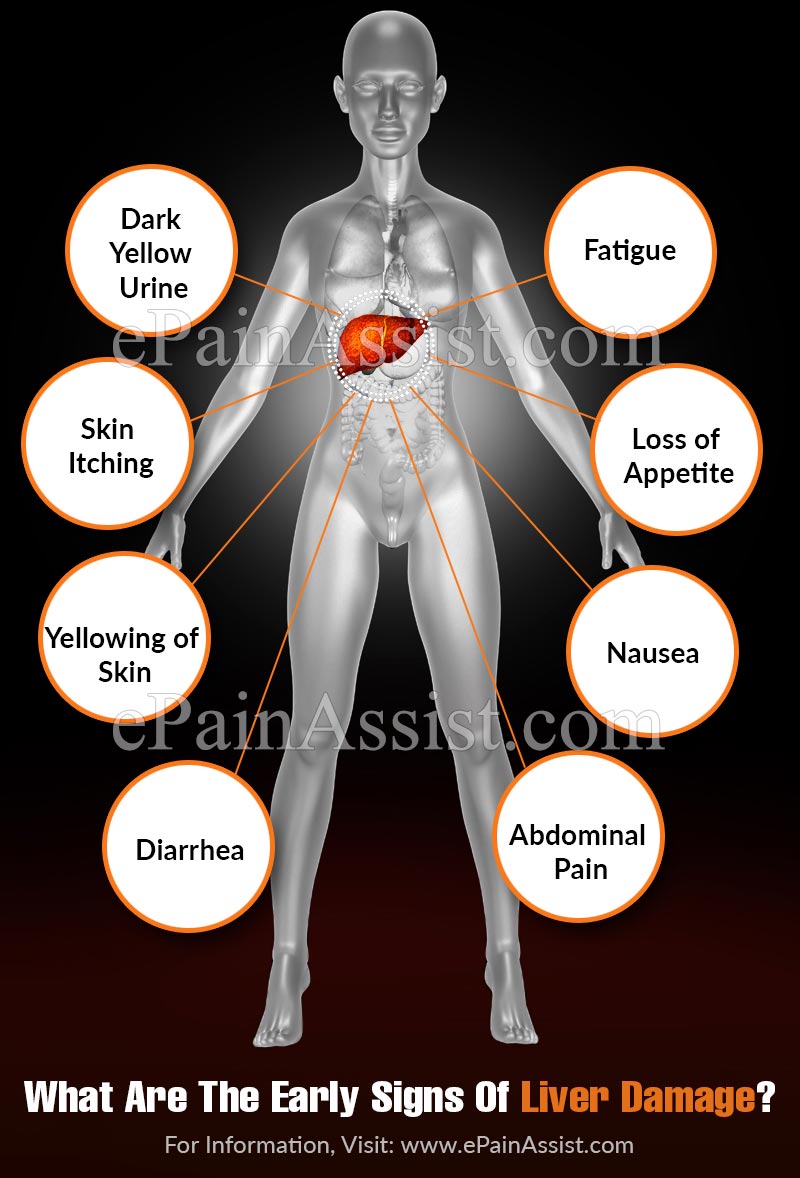Damage to anything and everything has repercussions, be a living being or non-living thing. In the same way, even damage to liver has signs and symptoms indicating that its function is compromised and it needs intervention.

What Are The Early Signs Of Liver Damage?
The different signs that reveal liver is not functioning optimally are:
Fatigue: Generally, a person should feel fresh after good nights sleep and if one still feels tired then there is something wrong with the body. Fatigue could be a sign of many diseases such as sleep apnea, diabetes, hypothyroidism or heart disease, but it could also be a sign of damaged liver. The lack of proper metabolism leading to accumulation of toxic products in the body along with low oxygen level could lead to fatigue and weakness in liver damage/disease.
Nausea and Vomiting: As liver assists in digestion, its damage leads to indigestion causing nausea and vomiting and on occasion, heartburn.
Abdominal Pain: Pain is the first sign of something being wrong. With a damaged liver, there is also pain and it is mostly present at the location of liver, in the right upper quadrant of the abdomen. The pain might be dull in nature, but sometimes it is severe and sharp/throbbing too, which might or might not radiate to the back/right shoulder area. The pain is due to lack of function and/or swelling of the diseased organ.
Loss of Appetite and Weight Loss: This is psychological as well as physical symptom related to improper liver functioning leading to poor digestion, thus a person does not feel hungry to avoid pain and discomfort of nausea and vomiting too. The loss of appetite also leads to weight loss.
Diarrhea: This is also one of the early sign/symptom of liver damage/disease. Due to improper digestion of food, most food is excreted out of the body undigested causing diarrhea.
Yellowing of Skin – The sign of skin yellowing as well as yellowing of the eyes is a symptom of increased bilirubin in the blood, which is a bile product and a waste material that should be eliminated from the body. However, due to improper liver function, bilirubin gets accumulated under the skin and often finger tips as well as fingernails. This condition is called jaundice and can be seen in cases of hepatitis, liver cancer, excessive alcohol intake, drug intake, various infections and exposure to certain toxins.
Skin Itching: The buildup of bile salts on the skin due to incomplete regulation and excretion of bile products leads to itching of the skin. Although, the skin appears normal there is persistent itching leading to skin flaking.
Dark Yellow Urine: This is due to increased bile pigments in the body, which were supposed to be eliminated by liver, but unable due to liver disease/damage. Most of the times dark colored urine is thought to be due to dehydration and unable to point out liver disease as a causative factor.
Initial liver damage is most of the times symptom less and if present they are usually mild, so the patient is unaware of them or ignores them, which leads to diagnosis of liver damage when it has progressed to liver failure or the symptoms have become more serious.
The early symptoms, when not treated lead to progression of liver damage over time causing more severe symptoms such as swelling of extremities and abdomen due to fluid collection, easy bruising or bleeding of skin due to thrombocytopenia and decreased production of various clotting factors essential for blood clotting, worsening of fatigue, weakness, frequent vomiting, and weight loss. The symptoms become so worse that they can even lead to cognitive changes leading to behavioral changes including confusion, loss of concentration, increased sleepiness, which finally leads to coma and death if left untreated.
It is best to get yearly liver function tests to monitor proper functioning of liver and to visit a doctor at the first sign of discomfort.
Also Read:
- Liver Damage or Liver Failure: Causes, Signs, Symptoms, Prevention
- What is Enlarged liver or Hepatomegaly: Causes, Symptoms, Treatment, Recovery, Complications
- Liver Metastases: Causes, Symptoms, Treatment, Stages, Survival Rate, Prognosis
- What is a Liver Abscess & How is it Treated?
- How Do I Take Care of My Kidneys and Liver?
- What is Liver Fibrosis: Stages, Causes, Symptoms, Treatment, Diagnosis
- Types of Liver Infection: Viral and Non-Viral Liver Infection
- How Do You Know If Your Liver Is Failing?
